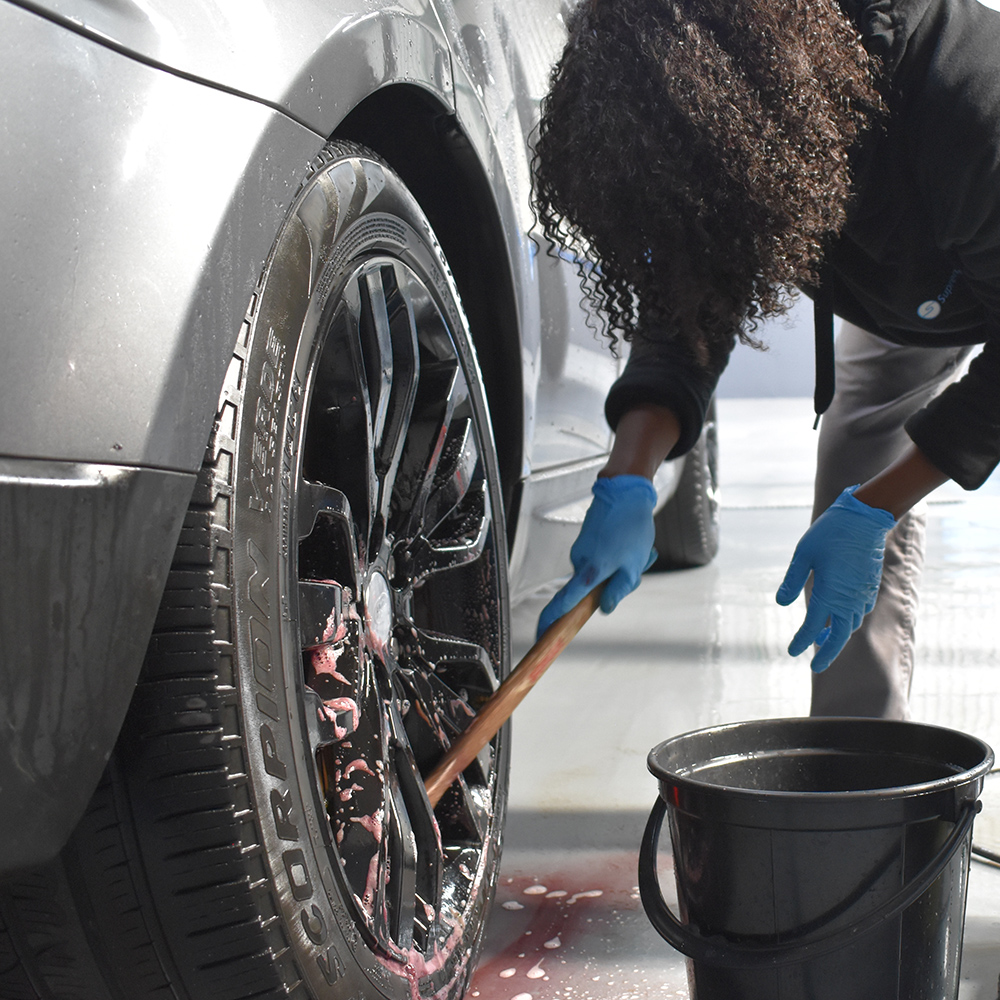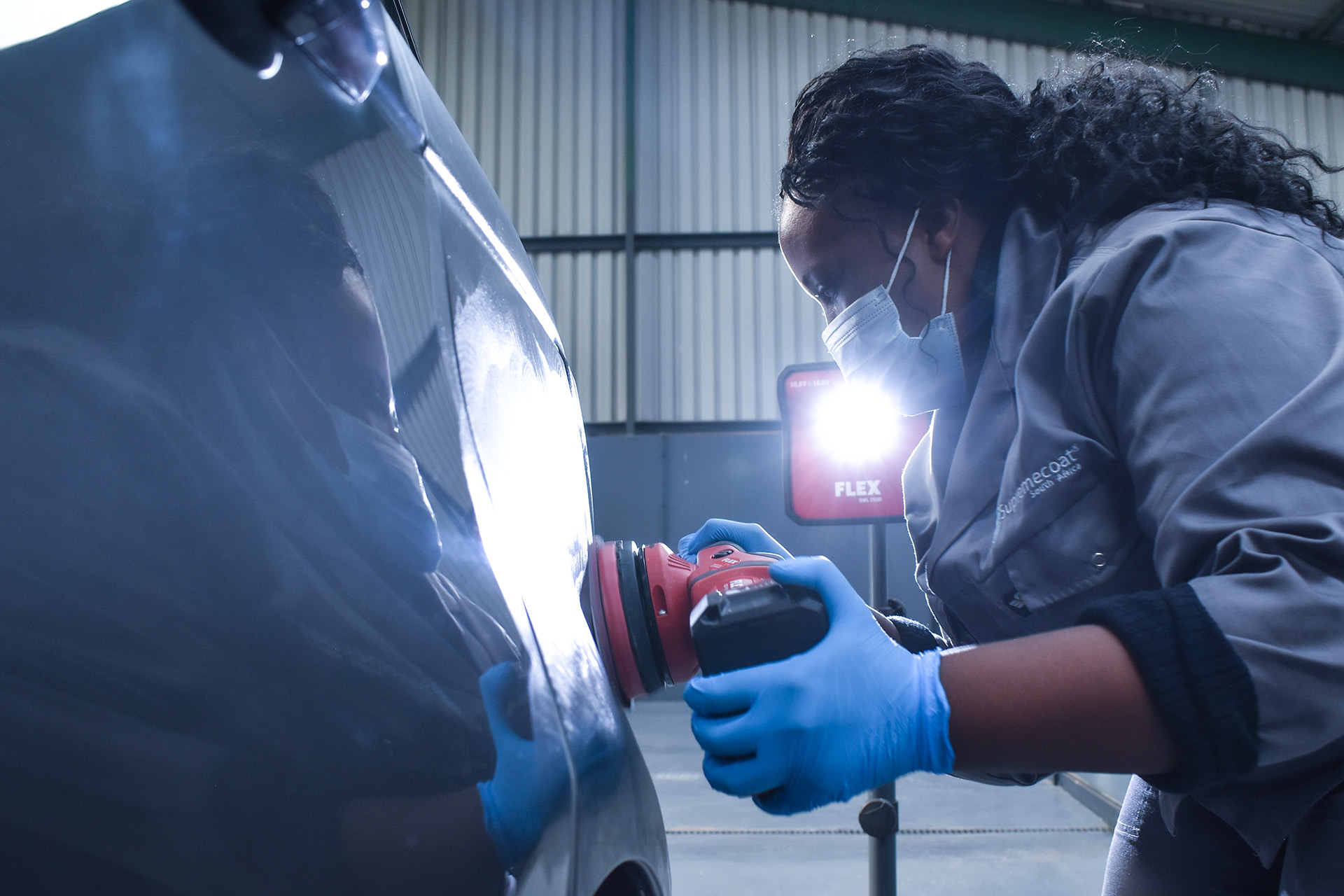GENERAL PROCESS
- Decontamination and Cleaning: This initial stage involves thoroughly washing the vehicle to remove dirt, grime, and contaminants from the exterior surfaces. It includes processes such as pre-rinsing, foam washing, scrubbing, and rinsing. Cleaning the vehicle’s exterior prepares it for the subsequent stages of detailing by providing a clean surface to work on.
- Paint Correction: Paint correction is the stage where imperfections in the paintwork are addressed to restore and enhance its appearance. It typically involves three sub-stages:
- Compounding: Compounding involves using an abrasive compound or polish with a machine polisher to remove swirl marks, light scratches, oxidation, and other surface imperfections. It is a more aggressive process that helps level the paint surface and remove a thin layer of damaged paint.
- Polishing: Polishing follows compounding and focuses on refining the paintwork further. A less aggressive polish is used with a machine polisher and appropriate pads to remove any remaining scratches, refine the finish, and enhance gloss. This stage brings out a deep, reflective shine.
- Finishing: The finishing stage aims to achieve a flawless, mirror-like finish. It involves using ultra-fine polishes or finishing compounds with soft foam pads to remove any remaining minor imperfections and further enhance the paint’s reflectivity.
- Protection: The final stage involves applying protective products to preserve and safeguard the newly corrected and polished paintwork. This includes applying a wax, sealant, or ceramic coating to provide a sacrificial layer that shields the paint from environmental contaminants, UV rays, and other potential damage. Additionally, other exterior surfaces like glass, trim, and wheels may also be protected using specific products.


